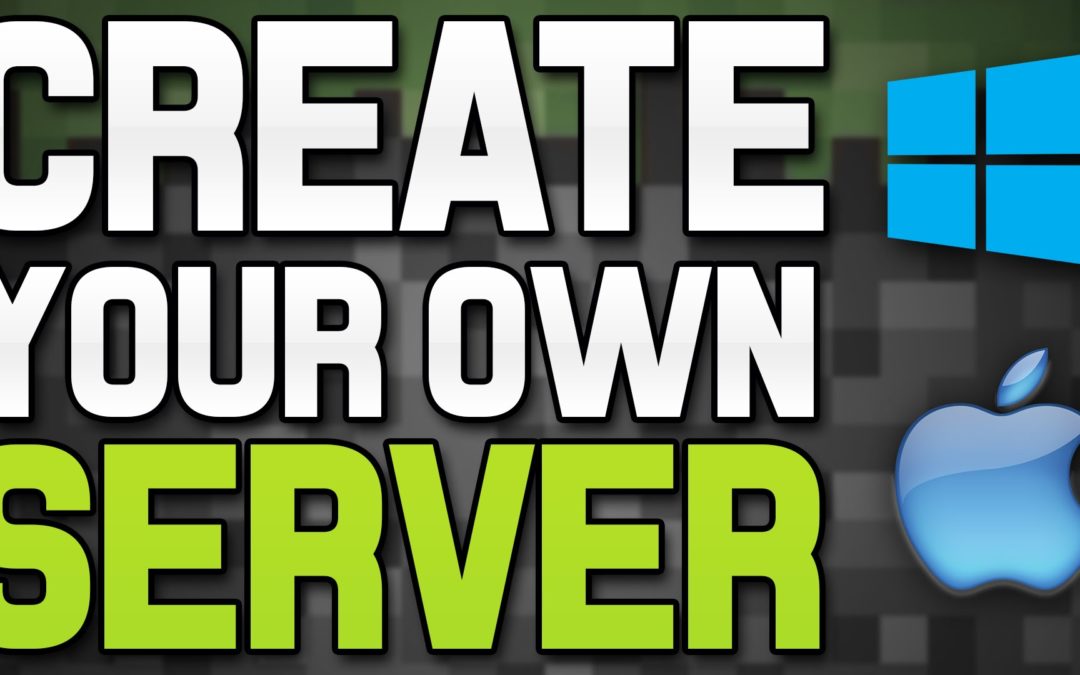
by Stone Marshall | Jul 22, 2018 | Awesome Book News, Free, Intro, Minecraft News, Minecraft questions, news, parent-news, State of Stone, Stone Marshall Book News, Stone Marshall Books, Stone Marshall Club, Stone Marshall Minecraft Adventures, Uncategorized |
Running your own little Minecraft server can be a very rewarding experience. Over time, you may build up your very own community of loyal players, which has the potential to grow in popularity if you play your cards right and run your server well.
Although it sounds complicated, running your own server isn’t as hard as you’d imagine. You do not need much prior technical knowledge to get going. Just keep in mind, you should know the Minecraft game itself very well if you are going to attempt this!
Running your own server gives you complete creative control, and there are hundreds of modifications out there which extend the multiplayer experience beyond simple, vanilla Minecraft survival; this is what has made Minecraft multiplayer servers so popular among gamers.
How to start your very own Minecraft server
1. Decide on a server theme and then choose a hosting provider
The first step is to decide on a server theme, and there are plenty to choose from: factions, prison, classic survival, and towny, among others. Each gameplay theme brings completely a completely different dynamic to the game, but you probably already have one in mind.
When you’ve settled on a theme, you need to choose a hosting provider. You can set up a server on your computer, but this is not feasible if you want to have a public server online 24/7. In addition, hosting a server on your computer requires a fair amount of technical knowledge, and it is much easier to go with a hosting provider, where setting up a server is as easy as clicking a few buttons. There are plenty of Minecraft hosting providers out there, but let’s use Nitrous Networks – a UK-based company – as an example.
You are free to use any provider, but Nitrous Networks has good ratings and their prices are reasonable.
2. Setting up your server
When you have paid for your server and it has all processed, navigate to your server’s control panel. It will look like this (most hosting providers follow a general layout):
Press Start, and your server console (where all the timestamped messages are) will fire up, preparing your spawn area. This will take around 10 to 20 seconds – you can see it is ready when no new messages appear.
To join your server, navigate to your Minecraft game client and direct connect to your server’s IP address.
That’s it – it really is that simple! Although, your new server will be very plain… it is what is referred to as ‘vanilla Minecraft’, that meaning it is the basic Minecraft game. Although it is possible to run a ‘vanilla’ server, they are not as popular as servers like factions, a player-vs-player game mode.
3. Installing Bukkit or Spigot
We recommend installing a Minecraft developer API mod such as Bukkit or Spigot – the two most popular Minecraft server modifications which provide additional functionality and control to Minecraft servers – allowing you to ‘plug in’ additional Minecraft server modifications (called ‘plugins’, such as Factions or Towny) into your server.
Don’t be intimidated by the jargon, installing these are very simple. In your server’s control panel, navigate to ‘Modpacks’ and choose either Bukkit or Spigot, then press Install. That’s it.
At this stage, it does not make much difference which you choose, but Spigot has additional functionality and is further optimized to support larger servers that pull in hundreds of players.
You do not need to worry too much about what Bukkit or Spigot are; they do very little on their own and are developer tools which expose an API which can be used by developers to add functionality to Minecraft servers. This additional functionality is implemented through plugins (and there are thousands), which can be downloaded freely and added to your server.
4. Making yourself an ‘op’
An ‘op’, short for operator, is an administrator on a Minecraft server. These people have access to additional commands and abilities (for example, such as being able to kick or ban players using /kick or /ban, spawn items using /give, or fly using /fly.)
As a server owner, you will want to make yourself an operator because this is the top-level administrative level you can have on a server. It is recommended that you give operator privileges only to yourself and trusted people because some of the commands can wreak havoc on your server and cause irreparable damage.
To make yourself an op for the first time, navigate to your server control panel and type ‘op [name]’ in the input box, replacing [name] with your Minecraft name.
In future, you can type ‘/op [name]’ within your actual server to make additional people operators. But, for first-time use, it must be done on the console.
5. Installing plugins
Plugins bring your server alive, and there are thousands of them. To get an idea of what plugins are and what they are capable of, we recommend installing some and playing around with them.
With the majority of reputable Minecraft server providers, installing plugins can be done through the control panel. Navigate to ‘Plugins’ and begin reading about some of the different ones available. We are going to install a plugin which displays a message to players who join your server. In the ‘Plugins’ search bar, type ‘welcome message’ and install the very first one.
Press View then Install and wait a few minutes. Then, restart your server by navigating to ‘Manage’ and pressing Restart. Your plugin will now be installed. Before the plugin will work, you will need to configure it. This is very easy, and most plugins have a user-friendly file called ‘config.yml’ which allows you to modify its settings.
To access a plugin’s configuration, navigate to the ‘plugins’ folder under the ‘File Manager’ tab, open the plugin’s unique folder (which is usually the name of the plugin) and then click ‘Edit’ next to ‘config.yml’ and follow the instructions provided by the plugin’s developer. It is very easy, and requires no special knowledge.
6. What next?
There are many possibilities with running a Minecraft server, and the best course of action is to just go with the flow, play around with some plugins and figure everything out as you go – you can only learn to run a server by running one, even if it’s just you who plays it to figure things out!
Some of Minecraft’s bigger servers and server networks pull in thousands of unique players per month, and if you create a community which appeals to the general Minecraft community, you could find yourself building a name for yourself very quickly.
Read more here: https://en.softonic.com/articles/how-to-start-your-very-own-minecraft-server
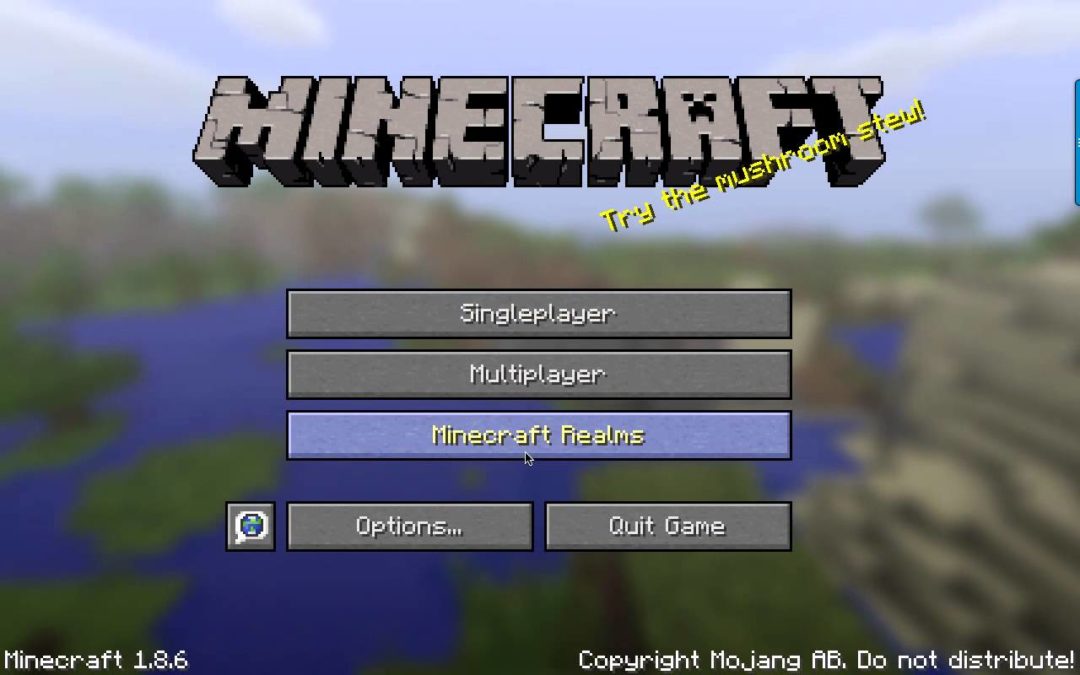
by Stone Marshall | Jul 21, 2018 | Awesome Book News, Free, Intro, Minecraft News, Minecraft questions, news, parent-news, State of Stone, Stone Marshall Book News, Stone Marshall Books, Stone Marshall Club, Stone Marshall Minecraft Adventures, Uncategorized |
Sometimes you make a username, and realize that it’s not the one you want. For most sites, this is an easy fix, and Minecraft is no exception. Unfortunately, you can’t do it in the Minecraft program. This can cause a bit of confusion for those who are trying to change it quickly. But no need to fret. Below we’ve detailed the steps you have to take to change your name with speed and ease.
Name change rules
Minecraft doesn’t allow you to change your name again within 30 days of you doing it. So keep that in mind when you are thinking of what you want your name to be. This 30-day rule also applies to new accounts, so you won’t be able to change a new account name for 30 days either.
Changing your name
We just verified that this works: The first thing you’ll have to do is go to the Mojang website here. Click “Log in” in the top right corner, and log in using the email attached to your Minecraft account. Once you’ve logged in, you should see your Minecraft account, and your username. Next to your username is the word “Change” in parenthesis. Click this, pick whatever name you want, and then verify the prompt they give you. After that, you should be all set!
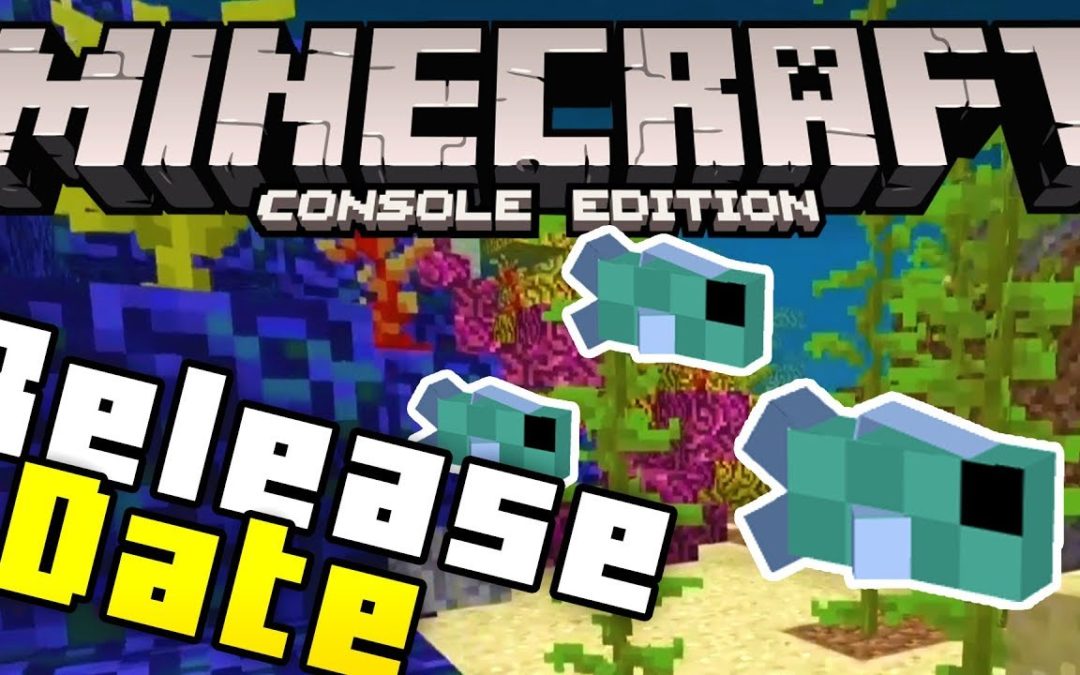
by Stone Marshall | Jul 21, 2018 | Awesome Book News, Free, Intro, Minecraft News, Minecraft questions, news, parent-news, State of Stone, Stone Marshall Book News, Stone Marshall Books, Stone Marshall Club, Stone Marshall Minecraft Adventures, Uncategorized |
So, it’s launched on Xbox One, but when is the Minecraft Aquatic update PS4 release date? The patch launched on Xbox One, Windows 10 and mobile in mid-May, and phase two of the update release in July. However, we’re still waiting to hear about an Aquatic update release date for PS4.
The new content allows Minecraft players to dive deep into the ocean. You can discover marine life, such as dolphins and fish. Under the sea, players will find treasure chests in shipwrecks and a range of different biomes, alongside 3,000 new additions.
Watch the trailer.
The good news is that owners of the Minecraft PS4 Edition will be getting Update Aquatic. In a statement made on the official blog, Mojang said:
Arriving a little while after the initial launch, players on PlayStation 4 Edition, PlayStation 3, Xbox 360, PS Vita and Wii U will all receive the Update Aquatic.
Minecraft Aquatic Update PS4 Release Date Still Unknown
So, the launch of the significant new addition to the popular sandbox game has already come and gone on various platforms. Now that phase two of the patch has released, we’d expect that the Minecraft Aquatic Update PS4 won’t be too far behind now.
Read more here: https://www.psu.com/news/when-is-minecraft-aquatic-update-ps4-release-date/
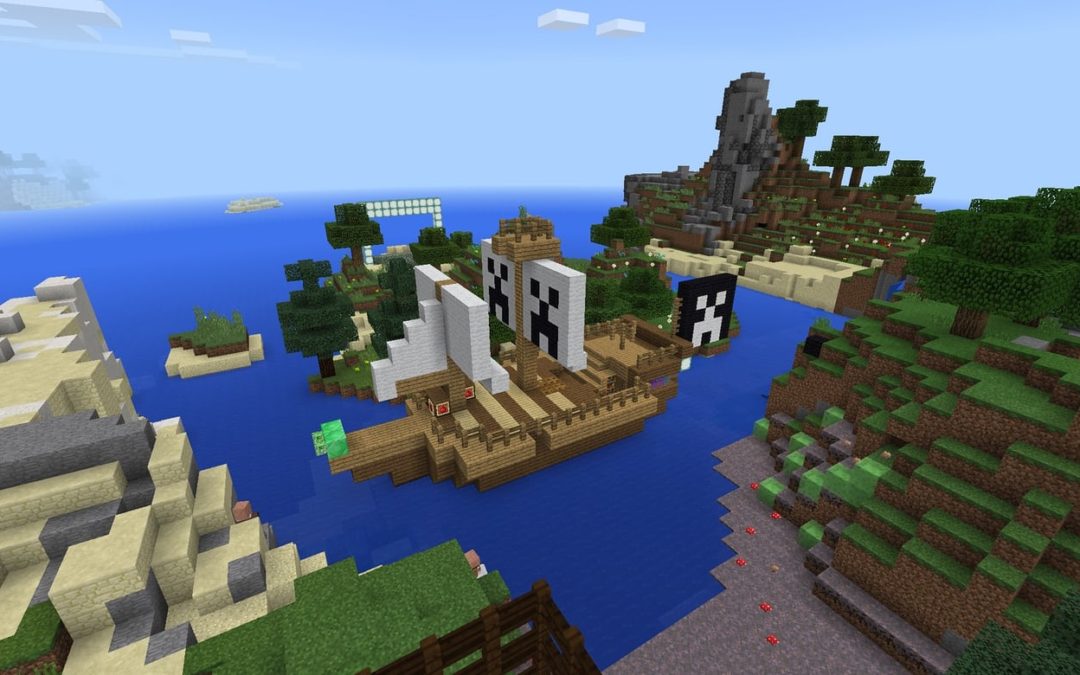
by Stone Marshall | Jul 20, 2018 | Awesome Book News, Free, Intro, Minecraft News, Minecraft questions, news, parent-news, State of Stone, Stone Marshall Book News, Stone Marshall Books, Stone Marshall Club, Stone Marshall Minecraft Adventures, Uncategorized |
Ever wanted to explore Treasure Island or pretend to be Robinson Crusoe? Minecraft is now being used to create an ‘immersive experience’ to engage reluctant readers – we see how it plays out
Minecraft of resources … Litcraft’s Treasure Island. Illustration: Lancaster University
Robert Louis Stevenson’s 1881 classic Treasure Island tells of Jim Hawkins’s adventures on board the Hispaniola, as he and his crew – along with double-crossing pirate Long John Silver – set out to find Captain Flint’s missing treasure on Skeleton Island. Now, more than a century later, children can try and find it themselves, with the bays and mountains of Stevenson’s fictional island given a blocky remodelling in Minecraft, as part of a new project aimed at bringing reluctant readers to literary classics.
Sign up for Bookmarks: discover new books our weekly email
From Spyglass Hill to Ben Gunn’s cave, children can explore every nook and cranny of Skeleton Island as part of Litcraft, a new partnership between Lancaster University and Microsoft, which bought the game for $2.5bn (£1.9bn) in 2015 and which is now played by 74 million people each month. The Litcraft platform uses Minecraft to create accurate scale models of fictional islands: Treasure Island is the first, with Michael Morpurgo’s Kensuke’s Kingdom just completed and many others planned.
While regular Minecraft is rife with literary creations – the whole of George RR Martin’s sprawling setting for Game of Thrones, Westeros, has been created in its entirety, as have several different Hogwarts – Litcraft is not all fun and games, being peppered with educational tasks that aim to re-engage reluctant readers with the book it is based on. Lead researcher and head of Lancaster University’s English and creative writing department, Professor Sally Bushell, calls it “an educational model that connects the imaginative spatial experience of reading the text to an immersive experience in the game world”.
An example of Minecraft’s flexibility – users have recreated entire literary worlds, like JK Rowling’s Hogwarts.
She says, of the Litcraft Treasure Island: “We hope it will motivate reluctant readers – we can say, ‘We’re going to read the book and then at one point, we’ll go play on the ship.’ I would have loved it as a kid. It is an empathetic task – you do what the characters did yourself, so you understand why they act they way they did in the book.”
The Treasure Island “level” has been extensively road-tested by children such as Dylan, whose school is set to adopt Litcraft in 2019. “It’s really fun,” he says. “I enjoyed it because I’ve read the book, but you have to follow rules in that. In games, you can explore. Now I know exactly what the book looked like.”
What did he like most? “I like that you get to see the pictures. You don’t have to make them in your head. And I liked the ship, Ben Gunn’s cave and the parrots. And there was that weird pig that kept jumping off that cliff. That wasn’t in the book!” (“That was a game glitch,” says Bushell).
The kids know how to use Minecraft more than the teachers do. It inverts the relationship
Sally Bushell, Lancaster University
The project, which is featured on , is currently being presented to school teachers and librarians across the UK. There has been “an enthusiastic response” to the trials under way in local schools, with plans to roll Litcraft out to libraries in Lancashire and Leeds from October 2018.
Dylan, like many nine-year-olds, enjoys books but is more enthusiastic when talking about Minecraft, which he does with the casual expertise that many children have with their favourite games. He’s already made his own Hunger Games world in Minecraft at home, but couldn’t get some of his traps to work.
This know-how seems to both frighten and impress less tech-savvy adults – which Bushell hopes will not deter schools from adopting it. “The kids know how to do it more than the teachers do,” she says. “It inverts the relationship: you’ve got kids who know more than the adults. You need quite confident teachers. They’re more worried about it. I want to say, ‘Don’t be worried, because all your eight-year-olds will know how to do this.’”
Libraries are particularly interested in the possibilities of multiplayer, Bushell says, adding that one of the future projects will be Lord of the Flies: “In that case, you want all the kids in there playing out a scenario and asking philosophical questions. We hope they do some reading, then play the game, then do some empathetic writing based on what they did in there.”
The Kensuke’s Kingdom map, based on Morpurgo’s story of a boy washed up alone, is particularly aimed at engaging reluctant readers and has just been completed. “The library resources we are putting together include audio and in-game reading and writing as well as graphic novels as a step to the full text,” said Bushell. “The resources are designed to encourage them to either return to or connect with the book through the immersive experience.”
Bushell said more literary Minecraft islands will follow. “Treasure Island is the first world for Minecraft.edu but they anticipate a series – most likely, the next will be The Swiss Family Robinson, The Tempest and Robinson Crusoe,” Bushell says. A recreation of Dante’s Inferno, with a map for each level of hell, is also in development.
But what book does Dylan hope to see next? “The Hunger Games,” he says with no hesitation. “A proper one.”
Read more here: https://www.theguardian.com/books/2018/jul/11/how-minecraft-is-helping-kids-fall-in-love-with-books
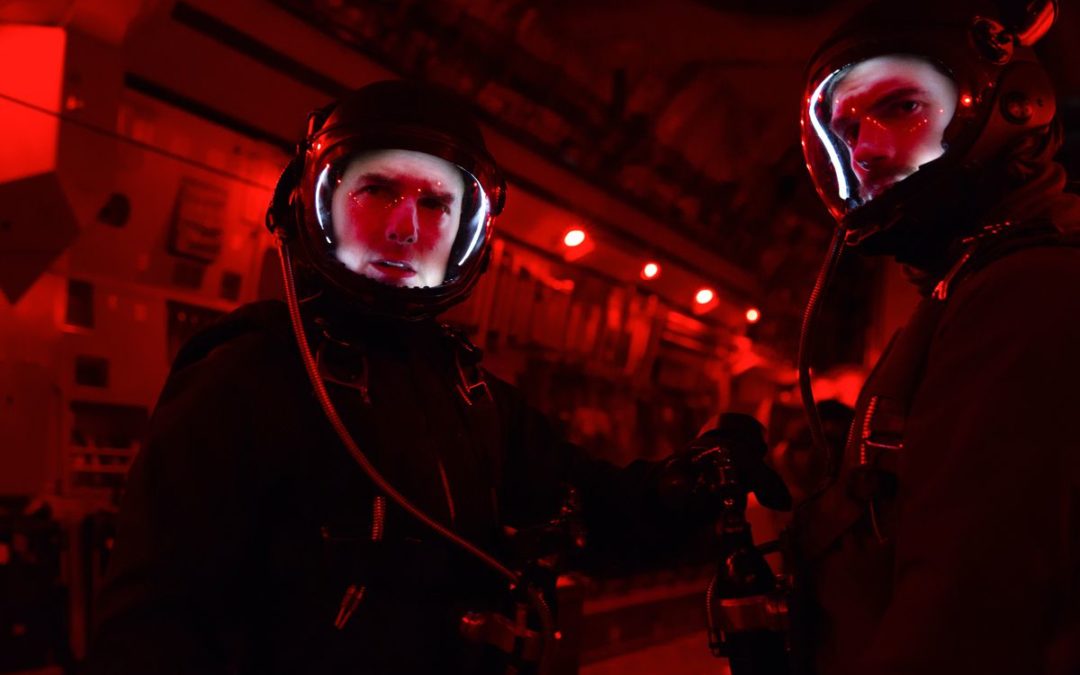
by Stone Marshall | Jul 20, 2018 | Awesome Book News, Free, Intro, Minecraft News, Minecraft questions, news, parent-news, State of Stone, Stone Marshall Book News, Stone Marshall Books, Stone Marshall Club, Stone Marshall Minecraft Adventures, Uncategorized |
Over the past two decades, the Mission: Impossible film franchise has become the reliable, comforting home that’s always ready to shelter Tom Cruise. No matter what turns his career takes, there’s always Ethan Hunt: the dogged Impossible Missions Force operative who always gives 110 percent, perpetually putting himself at risk to secure other people’s safety.
In a different era, Hunt would serve as a sort of Platonic action-hero ideal, and there wouldn’t be any need to dig past the archetype itself. But there’s been an interesting wrinkle in the franchise, starting with Brad Bird’s 2011 take, Mission: Impossible – Ghost Protocol. Hunt has had to face the notion of consequences — and not just the usual ones, where if he fails, some madman might blow up the world. Now, Hunt is facing personal consequences for his actions, as he has to leave behind his wife Julia (Michelle Monaghan) because he can’t sustain a relationship while perpetually globetrotting to save the world.
Christopher McQuarrie’s Mission: Impossible – Fallout builds that core idea into an entire film. Or at least it builds that core idea into a frame for jaw-dropping setpieces and brain-numbing plot twists. The result doesn’t just feel like the sixth installment in a long-running series, it feels like an authentic sequel to 2015’s Rogue Nation, bringing back many of the key characters and storylines to explore whether the ideals of a character like Ethan Hunt even make sense in the modern world. And it explores those ideas while telling an audacious, exhilarating story.
Fallout begins with a new IMF mission: after Hunt captured Solomon Lane (Sean Harris) in Rogue Nation, Lane’s criminal cohorts have reorganized under the name The Apostles, and are trying to obtain some missing plutonium. They hope to create order from the chaos of the world by inflicting massive harm through a series of attacks, and forcing countries to work together as the old world order falls. Hunt puts together a mission to buy the plutonium before The Apostles can get their hands on it, enlisting his usual cohorts: Luther Stickell (Ving Rhames, still the master of deadpan reactions) and Benji Dunn (Simon Pegg).
When things go awry, Hunt suddenly faces a choice: save Stickell, or protect the plutonium. The conflict clearly lays out the central conundrum in Hunt’s character, but IMF director Alan Hunley (Alec Baldwin) spells it out for the audience anyway: Hunt’s inability to prioritize the greater good over a single life may make people see him as a hero, but can also lead to the world becoming much more dangerous.
THE SAME CHARACTER TRAITS THAT MAKE HUNT A HERO MAY ALSO LEAD TO THE WORLD BECOMING MUCH MORE DANGEROUS.
With the CIA no longer confident in Hunt’s abilities, agent August Walker (Henry Cavill) is assigned to team up with Hunt to get the plutonium back. That sounds like a lot of setup, but it isn’t even Fallout’s first act. The movie is packed with plot reversals, and new characters arrive at every turn. The Crown’s Vanessa Kirby shows up as the White Widow, an arms broker who can help Hunt procure the missing plutonium. Angela Bassett plays no-nonsense CIA head Erica Sloan. Harris’ Solomon Lane returns as a key figure, and so does Ilsa Faust (Rebecca Ferguson), the MI6 agent who infiltrated Lane’s network in Rogue Nation. All of this is a lot for audiences to keep track of, and at a certain point, there are so many plot micro-turns that it becomes easier to stop trying to make sense of it all, and let the story wash by on the way to the next action sequence.
Photo: Paramount Pictures
That’s where the film really makes a statement, because Mission: Impossible – Fallout merges the franchise’s big-budget spectacle with an utterly ferocious style of action filmmaking that far surpasses what McQuarrie executed in either Rogue Nation or Jack Reacher. It’s filled with gasp-inducing motorcycle chases, kinetic car sequences, and bruising, brutal combat. When called into action, Cavill’s Walker is so savage a fighter that he’s hard to watch at times, whether he’s landing pummeling body blows or bashing his opponents into a bathroom sink. Many of the action beats just feel meaner than the industry standard, whether it’s Hunt taking a bruising tumble across pavement after being thrown from his motorcycle, or the relentless, violent gunplay that peppers so many scenes.
MERGES THE FRANCHISE’S BIG-BUDGET SPECTACLE WITH AN UTTERLY FEROCIOUS STYLE OF ACTION FILMMAKING
It sometimes feels like Fallout is more action reel than movie. The fight sequences are arresting, but they stretch out at such length that they can’t always maintain energy. What makes them constantly watchable, however, is the sheer variety — McQuarrie stages so many different kinds of action sequences in so many different locales that Fallout begins to feel like a James Bond film. The gorgeous IMAX visuals help as well. McQuarrie and cinematographer Rob Hardy pop into the immersive, 1.90:1 IMAX aspect ratio throughout the film, and the footage they capture with the IMAX cameras is stunning, particularly during a climactic helicopter chase above the snowy mountains of Kashmir.
Those IMAX cameras are particularly effective in capturing the sheer audacity of Cruise’s stunts. He’s made a personal trademark out of performing his own film stunts as often as possible, especially in the Mission: Impossible series. The actor famously broke his ankle during the filming of Fallout, and yes, the shot where he sustained the injury is in the finished film. (The Graham Norton Show featured a more gruesome breakdown earlier in 2018.) Cruise’s dedication is surprising, but his commitment to the role makes him almost too grounded of a character, which causes a sense of discordance in the later scenes, where the movie pushes into nearly comical levels of spectacle.
Photo: Paramount Pictures
But no matter how ridiculous the action sequences become, the dedication to that core idea ultimately elevates the film. At one point, Lane warns Hunt that eventually evil will triumph, and the bloodshed that follows will be a result of Hunt’s inability to modulate his worldview — “the fallout of all your good intentions.” Other action films have similarly explored the idea that holding onto an ethos isn’t expedient for a hero — perhaps most notably in Daniel Craig’s take on James Bond. But reframing an American action hero, particularly one played by Cruise, as too heroic to be effective gives the idea a different sense of weight. As a performer, Cruise is known for his steadfast dedication to his work projects. With the more controversial aspects of his public persona, he’s known for his intense devotion to his personal religious beliefs. And as an actor, he’s built a career largely on the idea of being the all-American action star. Fallout channels all of that, using both his performance and everything audiences think they know about Tom Cruise to its benefit. It builds a portrait of a man who’s so resolute in his own beliefs that he pushes people away — even the ones he loves most.
But Fallout is still a Tom Cruise movie, so while the movie shockingly follows through with the implications of its main theme, it nevertheless tees up events so that by the end, all feels right with the world. The door is left wide open for another entry in the series, should everyone involved (plus Cruise’s ankle) think they’re up for another go-round. But should this end up as the series’ final entry, it’s hard to imagine a better, more fitting end than Mission: Impossible – Fallout. It’s hilarious and thrilling. It acknowledges that single-minded devotion is what lets characters like Hunt do what they do, while also admitting it would make them incapable of adapting to any kind of normal life. And it’s the ultimate on-screen expression of Cruise’s own personal dedication to stunstmanship at all costs. In many ways, Fallout feels like a movie about Tom Cruise himself, with a clear message to bring across: he’s a complicated celebrity figure, but he’s still a pretty damn good movie star.
Read more here: https://www.theverge.com/2018/7/12/17566014/mission-impossible-fallout-review-tom-cruise
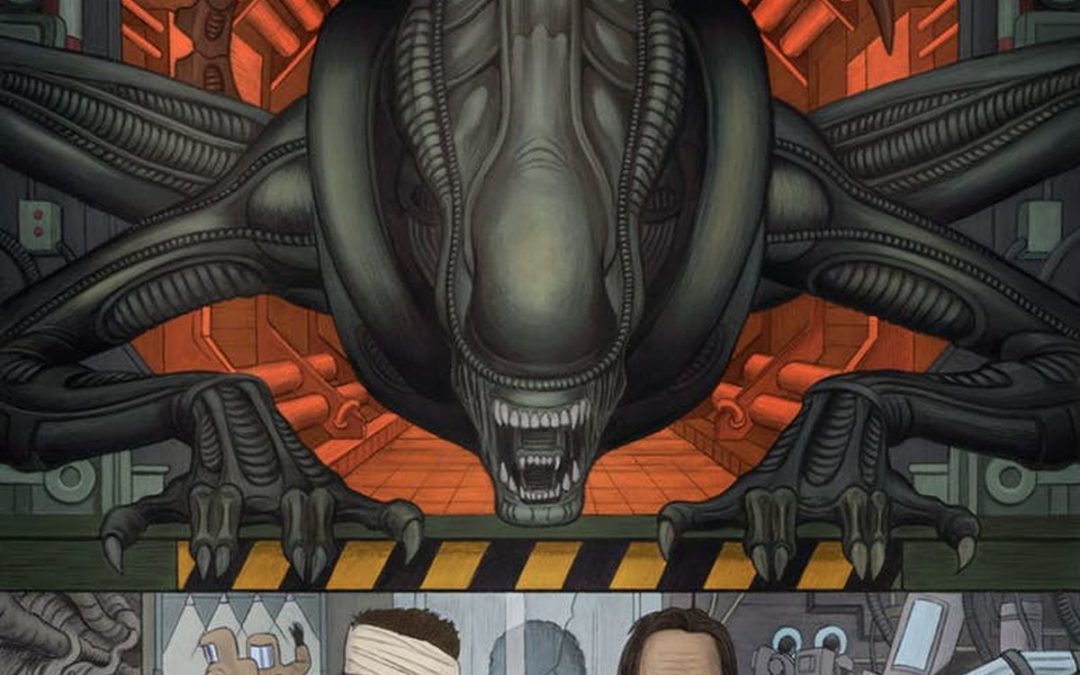
by Stone Marshall | Jul 19, 2018 | Awesome Book News, Free, Intro, Minecraft News, Minecraft questions, news, parent-news, State of Stone, Stone Marshall Book News, Stone Marshall Books, Stone Marshall Club, Stone Marshall Minecraft Adventures, Uncategorized |
The history of Hollywood is littered with film projects that waste away in “development hell” for years, or worse, are abandoned altogether, leaving movie-goers to wonder “what if?” Titles like Alejandro Jodorowsky’s ambitious Dune project or Nicholas Cage’s Superman Lives tease an alternate past in which a very different set of films hit theaters. One notable project that dangled in front of fans was the sequel to James Cameron’s Aliens, Alien 3. Initially, the film’s producers approached Neuromancer author William Gibson to write the script; he produced one, but ultimately it never saw the light of day.
Comic Book Resources revealed that Dark Horse Comics will release a comic series starting in November based on Gibson’s screenplay, adapted by Johnnie Christmas, who’ll handle both adapting the script and the art. Dark Horse already has the license for the franchise, and it’s done similar projects in the past, like its adaptation of George Lucas’ first draft of Star Wars, so it’s a natural fit for the publisher.
Image: Dark Horse Comics
Gibson’s script picks up following the events of Aliens, when the USS Sulaco — carrying Ripley, Hicks, Newt, and the remains of Bishop — strays into a Soviet Union-like territory called the Union of Progressive Peoples. Its soldiers board the ship and are attacked by a facehugger, before departing for a space station called Anchorpoint, which is later overrun by the aliens.
But producers weren’t satisfied with the script, and when Gibson wasn’t able to find the time for the requested re-writes, the project went to a variety of other writers; when filming started in 1991, it did so without a completed script. Had Gibson’s original script been filmed, the franchise would likely have taken quite a different turn. Instead, fans got David Fincher’s ALIEN³, the director’s 145-minute major-feature debut that polarized critics and audiences alike. (The director later famously disowned the film.) A fourth installment, Alien Resurrection, also disappointed audiences. A fifth sequel was planned, but never filmed, and 20th Century Fox eventually produced two Alien vs. Predator films (adaptations of Dark Horse’s crossover series), before the franchise went on ice for years, until Ridley Scott returned to the franchise with Prometheus and Alien: Covenant.
Gibson’s original script has floated around the internet for years, so the contents of the story won’t be a surprise to dedicated Alien fans, but its publication will nevertheless bring the story to life for a new audience. If it sells well, maybe we’ll get to see the unfilmed Aliens sequel that Neill Blomkamp wanted to make.
Read more here: https://www.theverge.com/2018/7/12/17565326/william-gibson-alien-3-unfilmed-script-dark-horse-comics-adaptation





